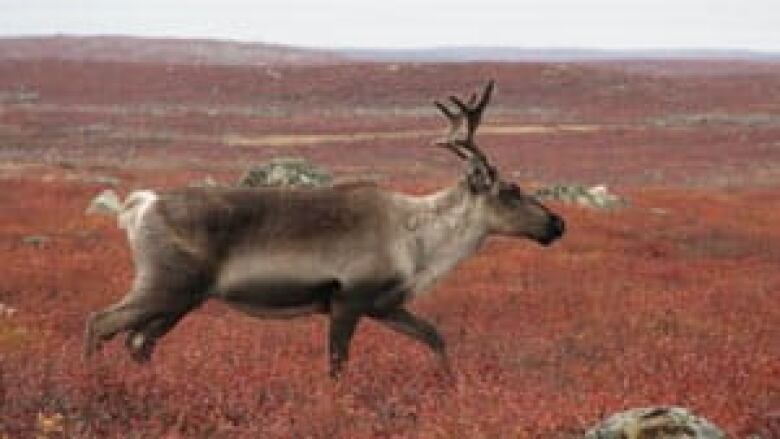N.W.T. park may be contributing to caribou herd recovery
Bluenose West herd has seen first increase in size in 20 years
Caribou conservation efforts in a national park in the Northwest Territories might be paying off.
An aerial survey this year shows a slight increase in the Bluenose West caribou herd. It's the first increase for the herd in 20 years.
Tuktut Nogait National Park is located 170 kilometres north of the Arctic Circle in the northeast corner of the N.W.T.
Biologist Molly Kirk said it protects the area where the caribou give birth. The parks name itself means "young caribou" in Inuvialuktun.
"They time their arrival into the park to be very close to the greenup of plants," she said. "The cows are dependent on really high quality plant forage to nurse the calves, and the growth that the calves have in the first few weeks of life is really critical."
In 1992, the Bluenose West herd was measured at 98,000 animals, but the numbers were in a free-fall. The numbers fell to about 75,000 in 2000, and got as low as about 18,000 in 2009.

In 1996 the Inuvialuit and Parks Canada created the 18,000-square-kilometre park, and development has been prohibited in the park.
Numbers have now grown to about 20,000 animals.
"By protecting the caribou calving grounds and post-calving grounds, weve protected that area for all time," said Diane Wilson from Parks Canada.
Inuvialuit do retain hunting rights in the park, but they have an agreement to limit their harvest.
"If it gets really down to it, we may have to go there sometimes, but very rarely we ever go into the park to hunt caribou," said Lawrence Ruben, the chair of the local hunters and trappers association.
The co-management board of the park has also ruled that fly-overs in planes shouldbe limited so as not disturb the caribou.












_(720p).jpg)


 OFFICIAL HD MUSIC VIDEO.jpg)
.jpg)



























































































